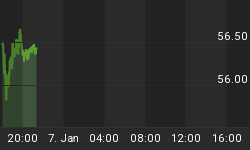There's a common human tendency to try and understand complex, multi-faceted issues in simple or even simplistic terms. That's why something like the centuries-old Groundhog Day Weather Indicator still has a large following even in this day and age!
Just like weather systems, financial markets are complex and difficult to predict. That's why some indicators like the “First Five Days” indicator that uses the behavior of the market during the first five days of the year to divine the trajectory for the rest of the year are not likely to work.
While not trying to condemn mainstream indicators like P/E, P/S, ROE and others, going beyond what everybody can easily discern can help you gain unique insights into the market. Here are five such indicators that you could be ignoring:
#1 Advance-Line Indicator
Most traders rely on data from stock indexes like the SPX, Dow Jones and Nasdaq Composite to understand how the markets are moving. But these are weighted indexes that are more representative of stocks with large market caps than those with smaller ones.
What if we could have an indicator that gives investors a feel of how many stocks gained or lost regardless of their sizes? That's exactly what the Advanced-Line indicator does. The indicator counts the number of stocks that go up and subtracts them from those that go down on any day to arrive at a net advance- decline value for the day.
Many days of these data plotted on a chart can give a nice visual clue of how the market is moving. A rising advance-decline line means most stocks are following the leaders higher which is a positive sign. A falling advance-decline line means most stocks are moving in the opposite direction to the leaders--a trend that is not sustainable.
#2 Small-Cap/Large-Cap Ratio
The small cap/large cap ratio is closely related to the advance-decline line. As the name implies, the ratio compares the number of small-cap stocks (usually in the Russell 2000 index) with large-cap ones in the S&P 500.
A rising small-cap/large-cap ratio means the market is more aggressive and is open to taking more risks, while a falling one means the market is cautious and seeking shelter in blue chips.
#3 Junk Bond Ratio
Junk bonds are credit instruments that are issued by heavily indebted companies. Because of this reason, junk bonds are classified as some of the riskiest investments in financial markets due to the danger of default by the issuing companies.
Related: The Key Takeaways From Blockchain's Biggest Week
Investor appetite for junk bonds can serve as a useful indicator of how much risk the markets are willing to take. Specifically, a high ratio of junk bonds to higher quality investment grade bonds tells us that investors are in an aggressive mood. On the other hand, a low ratio can spell trouble for stock markets because it means investors are less interested in taking excessive risks.
#4 Copper/Gold Ratio
The copper/gold ratio is a spin on the more common cash reserve and input prices metrics. It's based on the simple fact that copper is one of the most important industrial metals, while gold is the most prized store of value and hedging tool.
A rising copper/gold ratio means that the copper demand is high and investors are less interested in hedging--a positive sign. Conversely, a falling one says investors are less confident about the economy and are looking to protect their wealth--a bad sign for the market.
#5 Emerging Markets vs. U.S.
Emerging markets are deemed to be more speculative than the more mature U.S. stock market. A rising emerging markets/U.S. ratio means that investors are willing to take more risk, which bodes well for global markets and the U.S. A falling one usually portends less risk appetite and a more negative mood, which sometimes spills over to global markets and the U.S.
By Alex Kimani for Safehaven.com
More Top Reads From Safehaven.com:

















